- recipe
Fukusa

Difficulty: ★★★★☆
Fukusa
The bumpy surface of this Fukusa, also known as Chabokusa, makes it unique.
You can achieve a beautiful color by wrapping the filling with the baked, brownish side facing inward.
Ingredients
- Cake flour/Violet (NISSHIN SEIFUN):600g
- Lukewarm water:420g
- Whole egg: 270g
- Superfine sugar:480g
- Baking powder:4.8g
- ISUPATA (synthetic baking powder):12g
- Water:45g~60g (Adjust based on viscosity and flavor. A good guideline is to use 10% of the cake flour weight.)
How to make the dough
Add lukewarm water (about 40°C) to the sifted cake flour and mix. It takes some effort, but mix thoroughly until the dough becomes sticky and forms a film when rolled out.

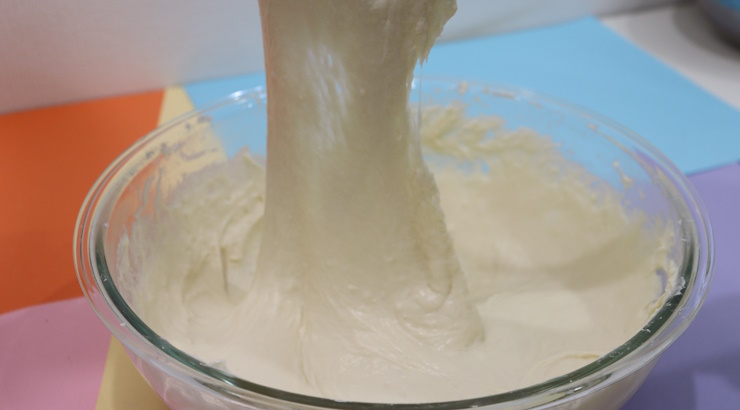
Add the whole egg and mix, then add the superfine sugar and combine well.
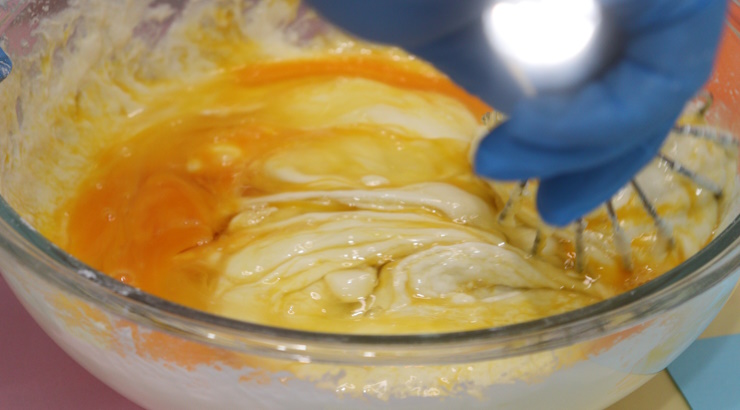

Let the dough rest for about 1 to 2 hours.

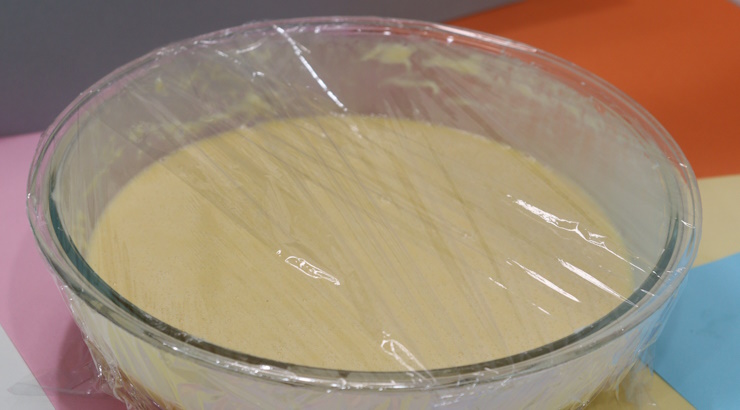
Add baking powder and ISUPATA, dissolved in a small amount of water, to the rested dough. Adjust the water quantity as needed while adding it.
If you want to add flavor, dissolve it in water before incorporating it, and include this water in the total amount (as described later).
The desired viscosity is approximately 15 dPa/s.
*Note: ISUPATA reacts at a lower temperature than baking powder, making it more likely to produce large bubbles.

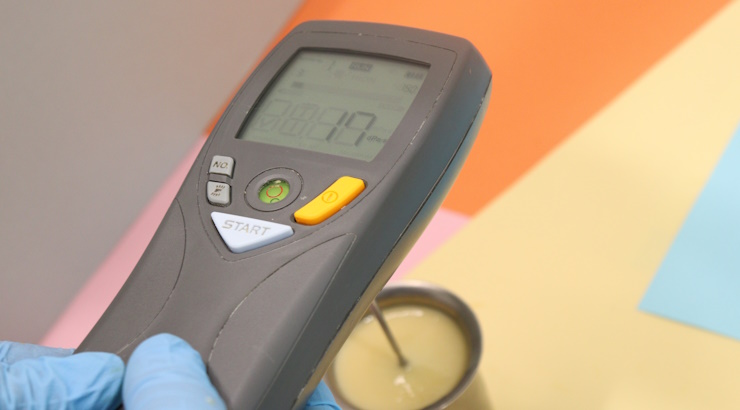
How to cook the dough
Set the Tabletop Pancake Cooker to 190℃.
Apply oil (Bitakatto SL) on the copper cooking surface.
Pour the dough onto the surface and after 1 minute and 20 seconds, lightly wipe the top with paper, then cover with a lid. Remove the pancake after 30 seconds without flipping it. (Total baking time is about 1 minute and 50 seconds.)
There is no specific type of paper required, but this time we used pure white roll paper, cutting it into sheets and discarding each one after use (6 sheets in total).





When adding flavor or color
When using powdered flavor or coloring, dissolve it in water before adding it to the dough.
Adjust the flavoring amount to about 1% of the flour weight. This time, after adding the leavening agent, we incorporated the flavor in thirds, mixing it into separate batches of dough. If you want a consistent taste, you can mix the flavor before adding the leavening agent.
Remember, if the dough with the leavening agent is left out for too long, the agent will react, and the bubbles won’t form, so bake it promptly.
For a light color, such as sakura, it’s recommended to use only egg whites instead of whole eggs.
This time, we prepared two types of base dough—one with whole eggs and one with only egg whites—and mixed flavors into each.
Whole eggs: Plain, matcha, coffee
Egg whites: Plain, sakura, pandan leaf
For the sakura flavor, we also added a small amount of red color powder dissolved in water for a delicate tint.


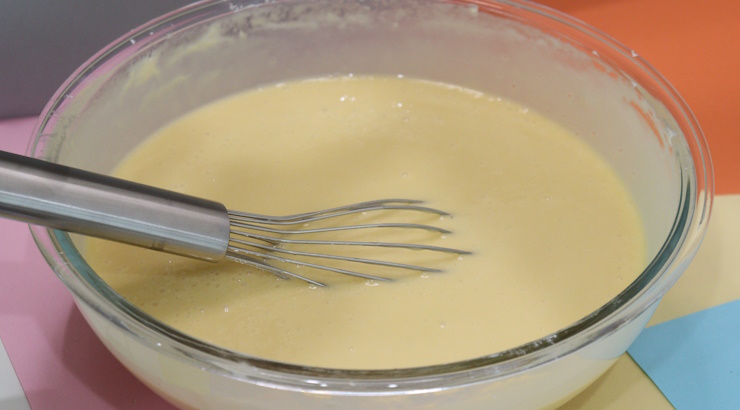

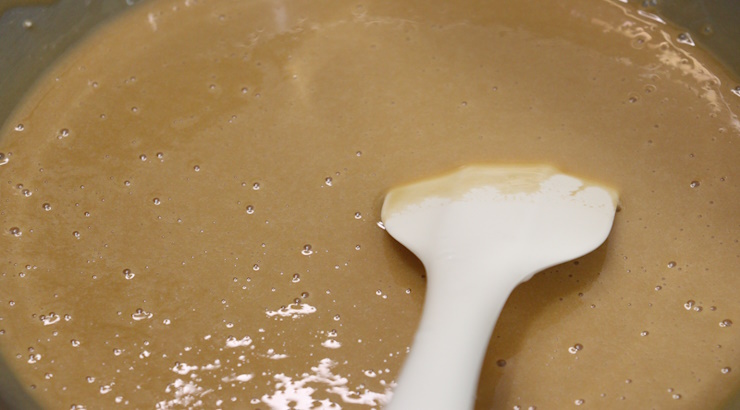








Pandan leaf is an herb commonly used in Southeast Asia, known for its sweet, vanilla-like scent.

Examples of fillings

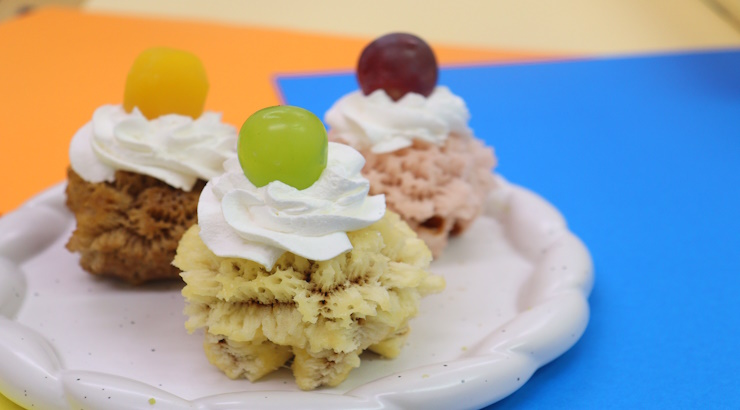
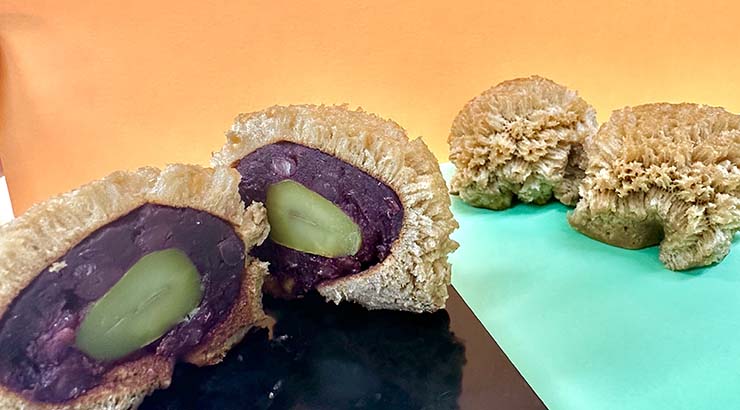
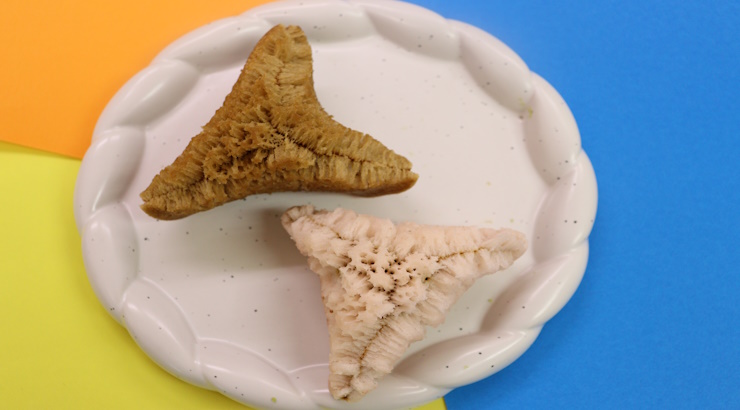


We tried making a traditional Japanese sweet called Fukusa! It turned out more vibrant and cuter than we expected ♡♡
This recipe seems perfect for changing the flavor and presentation according to the season or event.
Fukusa has a chewy texture and is quite filling.
Though the recipe is simple, the final result can vary depending on how you mix it to develop the gluten, the amount of leavening agent used, and the baking temperature, making it a deceptively deep sweet… 😅
